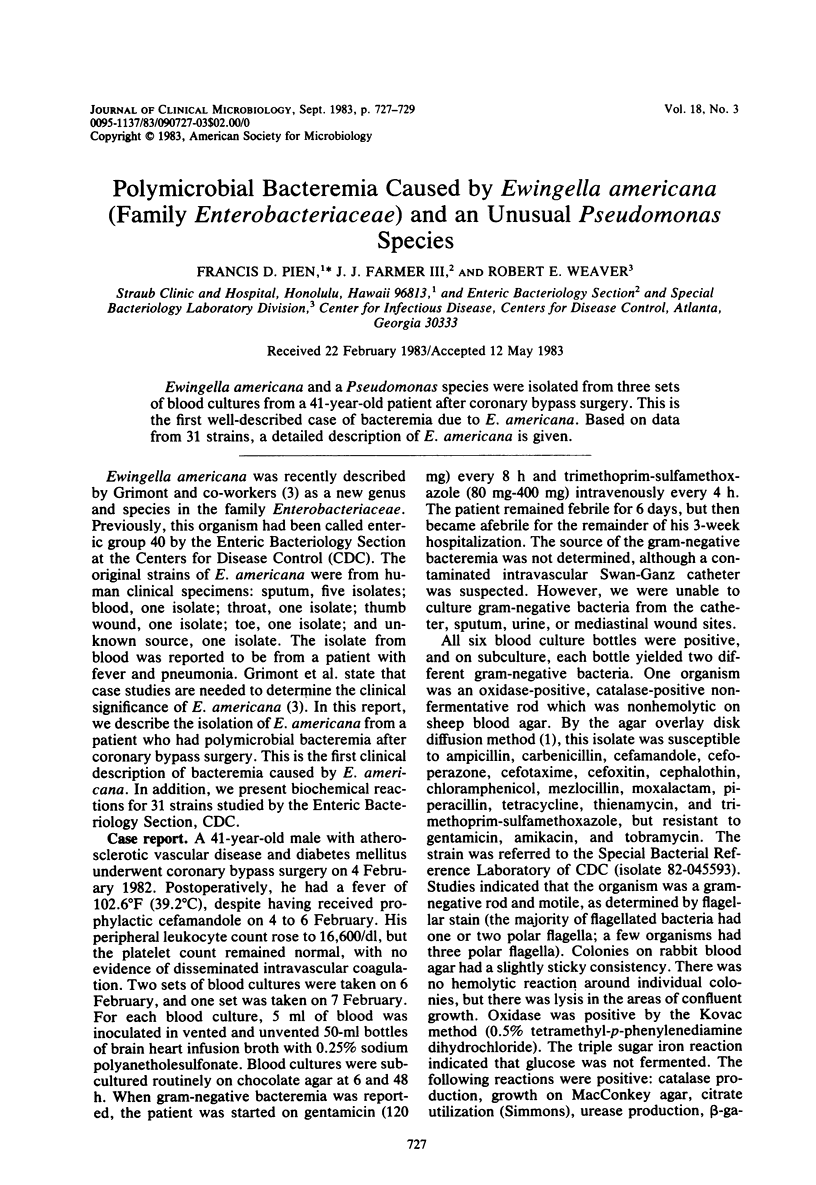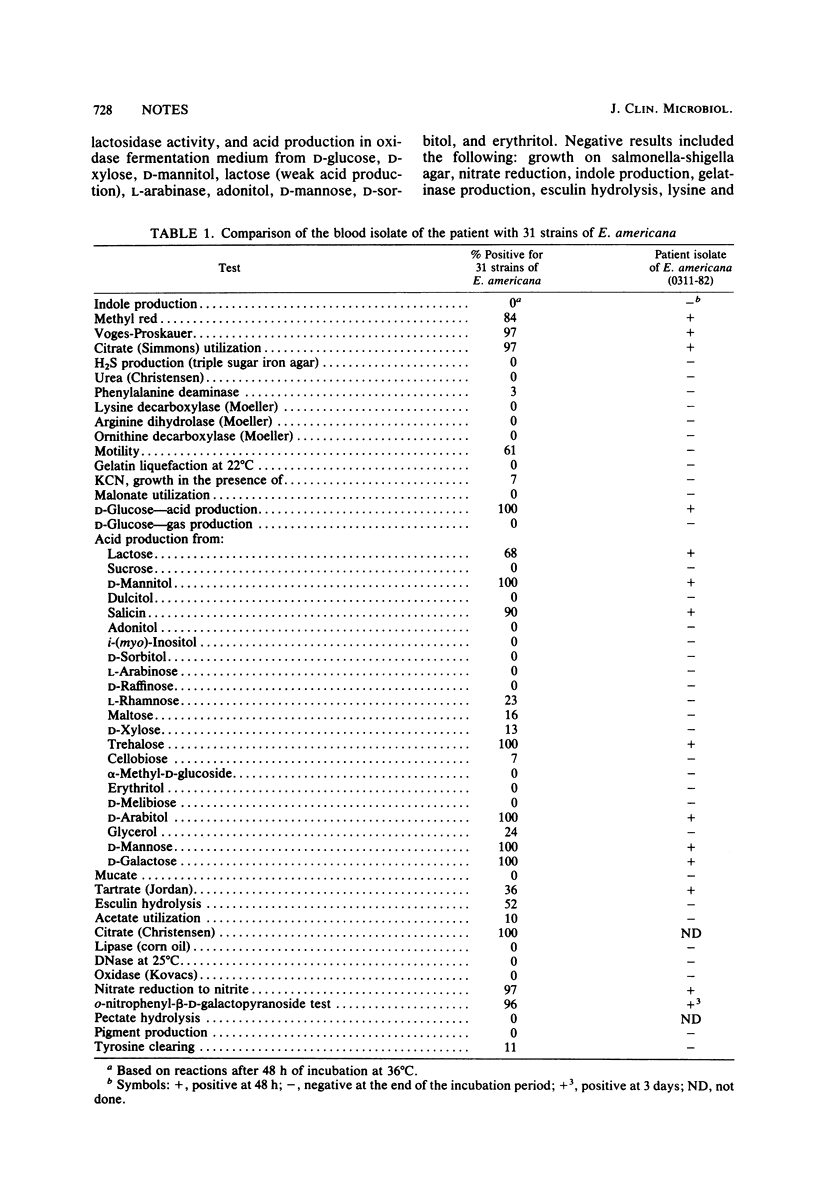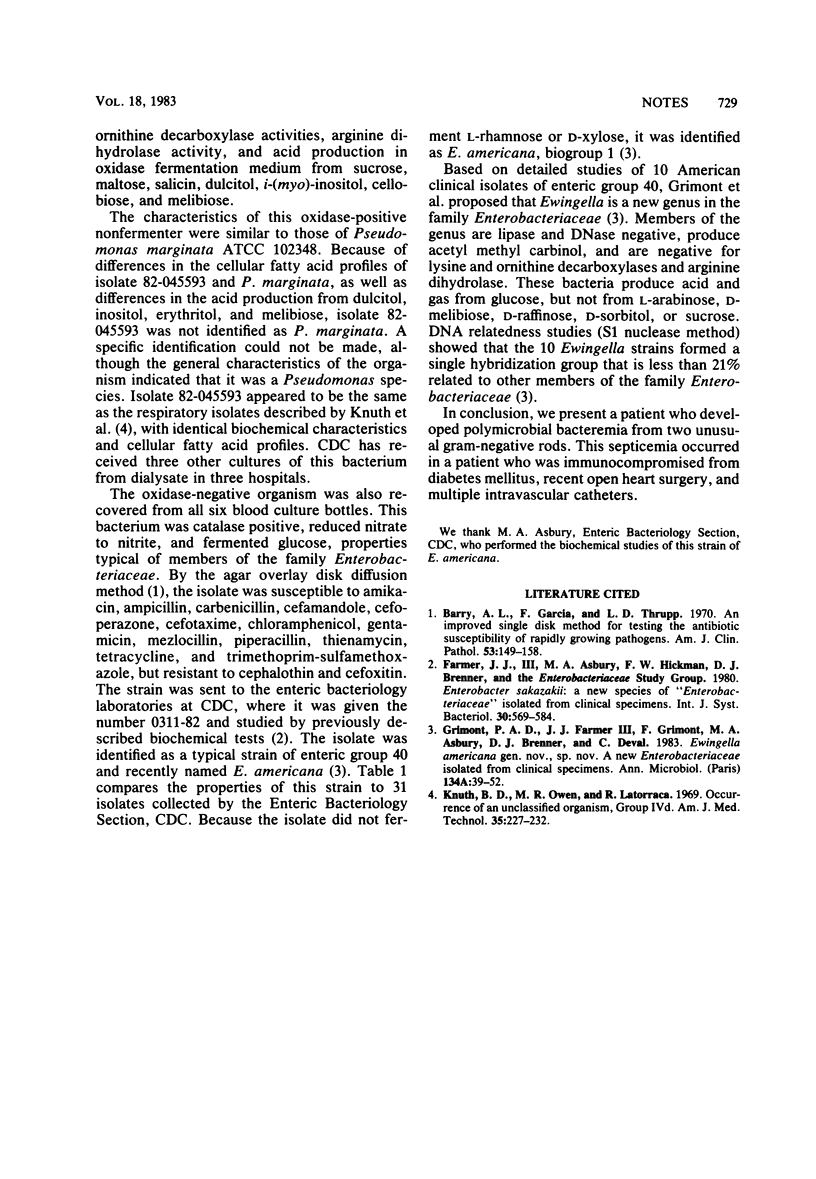Abstract
Ewingella americana and a Pseudomonas species were isolated from three sets of blood cultures from a 41-year-old patient after coronary bypass surgery. This is the first well-described case of bacteremia due to E. americana. Based on data from 31 strains, a detailed description of E. americana is given.
Full text
PDF


Selected References
These references are in PubMed. This may not be the complete list of references from this article.
- Barry A. L., Garcia F., Thrupp L. D. An improved single-disk method for testing the antibiotic susceptibility of rapidly-growing pathogens. Am J Clin Pathol. 1970 Feb;53(2):149–158. doi: 10.1093/ajcp/53.2.149. [DOI] [PubMed] [Google Scholar]
- Grimont P. A., Farmer J. J., 3rd, Grimont F., Asbury M. A., Brenner D. J., Deval C. Ewingella americana gen.nov., sp.nov., a new Enterobacteriaceae isolated from clinical specimens. Ann Microbiol (Paris) 1983 Jan-Feb;134A(1):39–52. doi: 10.1016/0769-2609(83)90102-3. [DOI] [PubMed] [Google Scholar]
- Knuth B. D., Owen M. R., Latorraca R. Occurrence of an unclassified organism, group IVd. Am J Med Technol. 1969 Apr;35(4):227–232. [PubMed] [Google Scholar]


